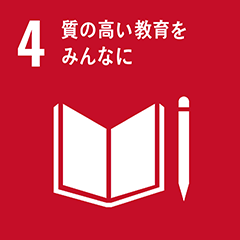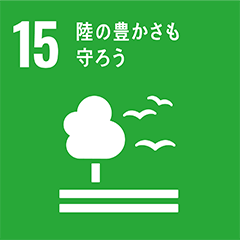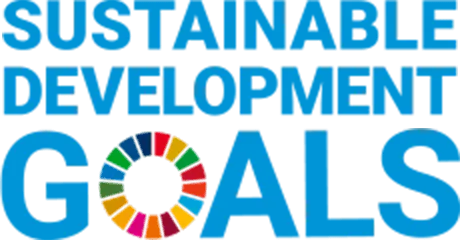Inochi Declaration
Transform workplaces and corporate-owned natural, intellectual, and cultural assets into open hubs for society, where Inochi is cherished.
Ishizaka Sangyo Co., Ltd. operates in four municipalities across Miyoshi Town, Kawagoe City, Tokorozawa City, and Sayama City in Saitama Prefecture. In 2015, the company opened Santome Konjyaku Mura, a community plaza nestled within a vibrant grove of trees, where people of all generations who work and live in this land can gather, relax, dine, play, and learn together. Originally launched with the concept of “Bringing Nature into Everyday Life: A New Satoyama*1 Style,” the plaza served as a space for children to thrive in nature and adults to converse and connect. It was later restructured into a place that visualizes the company’s business vision, connects shared empathy, fosters co-creation, and preserves the region’s distinctive natural and cultural heritage for future generations.
Ishizaka Sangyo seeks to communicate two core values. The first is “Zero Waste Design,” which does not merely aim to eliminate waste but rather envisions a society where waste is not perceived as waste in the first place. The second is the appreciation of the ancient philosophy that Inochi resides in all things, fostering a way of life that harmonizes beautifully with nature.
To express these values not just through language but also through non-verbal, artistic elements, the spatial design of Santome Konjyaku Mura was carefully crafted. Upon entering the plaza, visitors are immersed in an environment that conveys intentions and emotions through all five senses.
The provision of natural and social experiences encourages reflection on personal habits and attentiveness to nearby nature, fostering behavioral transformation. This approach represents “experiential” environmental education and ESD (Education for Sustainable Development).
Forward-looking investments have also been made to meet the needs of both present and future generations. By 2024, the site had grown to over four times the area of Tokyo Dome, and annual visitors surpassed 60,000. The facility now hosts corporate and organizational study tours and inquiry-based learning for schools.

Photo of bio-toilet: the walls are constructed using recycled materials, embodying the principles of “circulation and regeneration”.

An environmental education field where learning engages all five senses
Ishizaka Sangyo resonates with the vision of the Inochi Forum to realize a society where Inochi is valued. Toward the goal of welcoming 500,000 visitors to Santome Konjyaku Mura by 2050, it will carry out the following three action plans:
● Creating New Connections Between Nature and People Through a Chain of Well-being
Soil organisms are being harmed by global warming and urban development. Ishizaka Sangyo will repurpose the adjacent site of the former Miyoshi Town Waste Incineration Plant to restore the soil ecosystem through a regeneration business. This includes creating suitable habitats for nematodes, soil microbes, and earthworms, and planting native tree species. The plan is to build an eco-tourism site tentatively named “Forest of Life,” where diverse life below and above ground coexists. The company aims to cultivate a “healthy” satoyama from revitalized soil and connect the blessings of a “healthy” natural environment to human well-being—designing a virtuous cycle of well-being.
● Expanding Bonds Through “Experiential” Environmental Education and Nurturing Future Generations Who Value Inochi
In 2013, Ishizaka Sangyo helped establish a council for the Institute for Experiential Opportunities. Since 2019, it has hosted the Green Blue Education Forum (GBEF), an initiative to discover future leaders and engage in outreach. The Ministry of the Environment in Japan co-organizes the event, and operations are supported by corporate and organizational donations. In 2025, GBEF will be held at the Osaka-Kansai Expo, bringing together multigenerational participants in collaborative and sustainable activities. The company also aims to establish at least one certified provider of “experiential” environmental education and ESD in all 47 prefectures, cultivating leaders for local communities.
● Sharing the Value of Zero Waste Design with Asia and Protecting Inochi on Earth
Many Asian countries lack technologies for proper waste management and have not developed effective recycling systems. Some even lack customs of using trash bins.
Ishizaka Sangyo offers its recycling technologies and intellectual assets that allow for 98% resource recovery of construction waste to countries across Asia. By spreading Zero Waste Design abroad, the company promotes a circular economy. It actively accepts study tours and internships from overseas and hires individuals passionate about environmental business, supporting entrepreneurship in more than five countries.
The Inochi Forum will collaborate with organizations including Ishizaka Sangyo to encourage the development of community models such as Santome Konjaku Mura in regions across Japan.
[Notes]
*1 Satoyama is a Japanese term for the border area between village and mountain, where people live in harmony with nature.”
[References]
・Mitomi Konjaku-Mura
https://santome-community.com/
・Research Institute for “Opportunities for Experience”
https://esd-place.org/
[Action Platform]
Education and Children
[SDGs]




